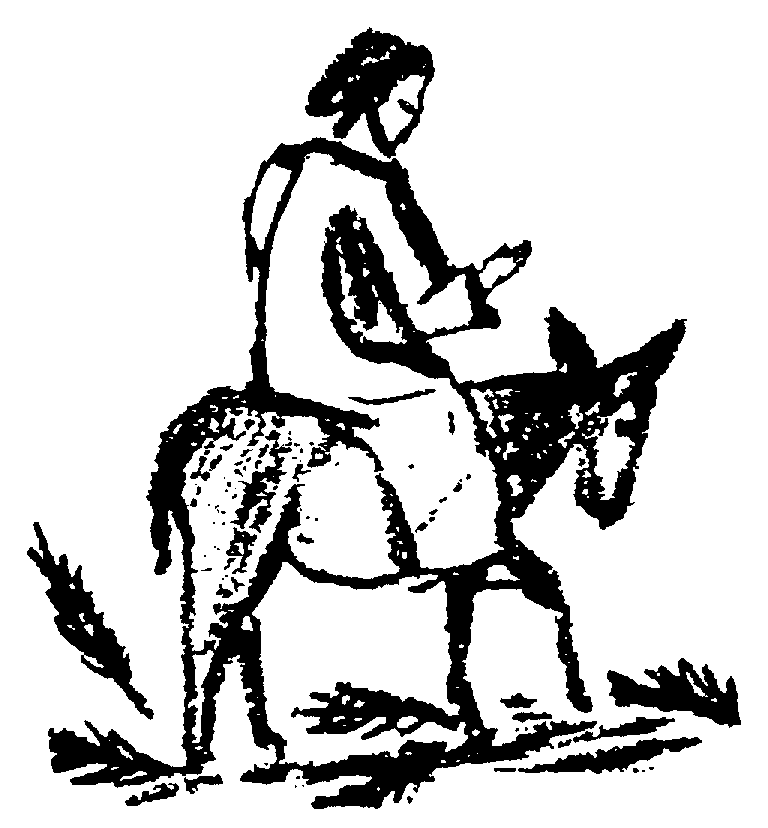Jesus and the Donkey…
28 Μαρτίου 2010
What exactly is the meaning of Palm Sunday? We know the simple facts: Jesus arrived in Jerusalem and asked his disciples to bring him a foal, the colt of a donkey to ride upon into the gates of . As Jesus entered the city the crowds began shouting, “Blessed is the King who comes in the name of the Lord!” and waved palm branches and spread out their coats on the streets. But this story is quite rich with symbolism and points to something much deeper.
First of all, the waving of palms and laying down of coats by the people was no accident or coincidence. Palms were signs of victory and of military achievement. The Romans gave palms to the victors in the Roman games and emperors gave them to their subjects following thier military conquests. The Jewish people had picked up on this and in 1 Maccabees the people waved palm branches to celebrate the newly established independence of Jerusalem and Judea.
The crowds believed Jesus was the “King,” that is, they believed he was the Messiah who had come to establish Israel’s independence from Rome, to liberate them in a very real way as their leader. They wanted a Messiah who would be their political hero. In fact, the whole scene replicates a King or General’s triumphant entry into a city. It all seemed so perfect and hopeful.
And even today we want this kind of Jesus, this type of Messiah. We want a Jesus who will bless our politics, bless our wars and battles, and will be “on our side” against all our foreign enemies. We seek a Messiah who will make us the world’s super power and bless our armies, weapons and military conquests.
The only problem is: Jesus isn’t that kind of Messiah.
The irony may have been lost on the people at the time, the way it is lost on most of us today, but Jesus’ “triumphal entry” was not that of a General or a warrior. No, such men ride stallions. Jesus rode in on a donkey. This symbolized that Jesus came on a mission of peace. The donkey revealed Jesus to be a humble peasant on a peace mission, not a military warrior.
This donkey, this symbol of peace is important on several levels. The donkey is the animal that is often used to mock and ridicule others. The word “ass” is not a flattering one, we use it to ridicule people. As GK Chesterton wrote of the donkey, he is the “devil’s walking parody of four footed things.”
But, in the way that Jesus had of constantly turning everything upside down, Jesus rides in on a donkey for his triumphal entry and not only establishes this irony, but lifts up the lowly, in this case, the lowly donkey in the process. This donkey becomes the sacred throne for, not only a King, but the very Son of God. Note that it was a donkey that had carried Jesus and Mary at the beginning of his life just before he was born as they rode into Bethlehem. And now a donkey carries him into Jerusalem just before his death.
Again Jesus shows us that that which we think has no value, has tremendous value in God’s eyes. In our society, animals are among the lowliest and have almost no value in our eyes. Would Jesus agree? Do animals have little to no value? In our culture, animals, particularly animals used in our food, fur or leather industries are essentially worthless and do not deserve our care and compassion. We harvest, torture, and kill them by the billions in our factory farms, fur farms, and slaughterhouses without a single care or thought for their lives or well being because we have “dominion” over them and like the way they taste or look. Jesus challenges our values and our notions of dominion in every way, from our political dominion to the cruel dominion we dare to exercise over God’s created world and God’s beloved creatures.
So, what are we to do with this kind of Messiah?
He comes in peace and humility and rides in on a donkey.
We do not want to conquer evil with peace, humility, and non-violence. We would rather resort to violence and power. That’s why, just a week later, when these would-be followers realize Jesus’ goal is not in line with theirs, they stop shouting “Hosanna” and start shouting “Crucify him!” We all do it in our own way.
What was hard for Jesus’ disciples to understand initially is that Jesus’ victory, while not militaristic, had a much deeper meaning behind it. Jesus didn’t want to just liberate us from our temporal enemies, Jesus wanted to liberate us from all our enemies, from the source and root of our problems: sin, evil, and death itself! This is the triumph behind the triumphal entry! This is the victory that Jesus won! Jesus was crucified, buried, resurrected, and returned to heaven; and we are the ones who must live this liberation out…by liberating all victims of oppression and violence by proclaiming and enacting justice and righteousness to the least of these in God’s world: to the victims of poverty, disease, and war; to the animals enslaved in industries of human exploitation. It is we who must live out God’s peaceable Kingdom here on earth.
Today our palm branches mean something quite different from what they once did. They are now signs of martyrdom and of victory over death, proclaiming liberation through peace and non-violent resistance. Wave them high and hold on to them… and remember their call to you. Hosanna in the highest! Blessed is the One who comes in the name of the Lord. He is the Prince of Peace and he rides a donkey.
AMEN.




